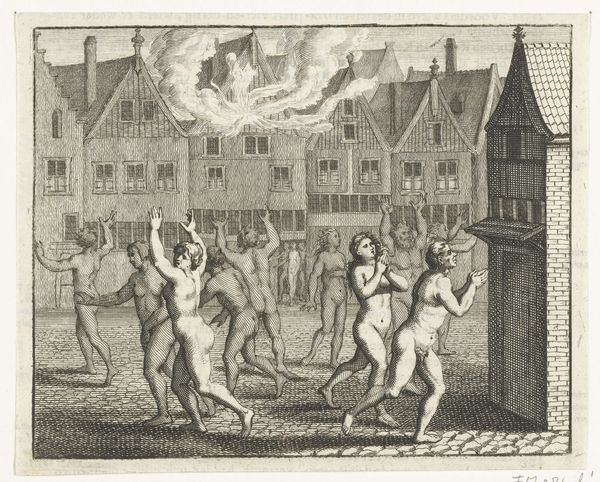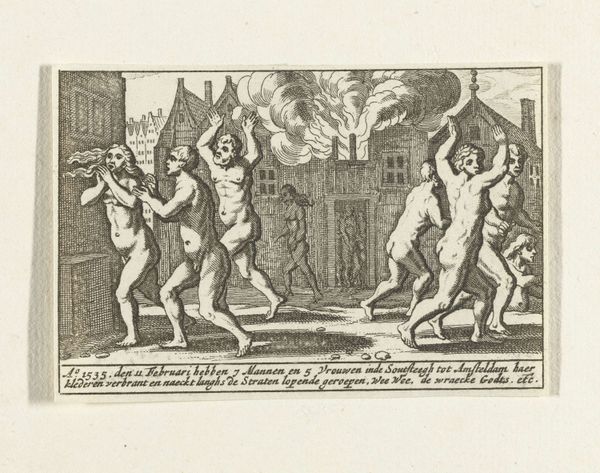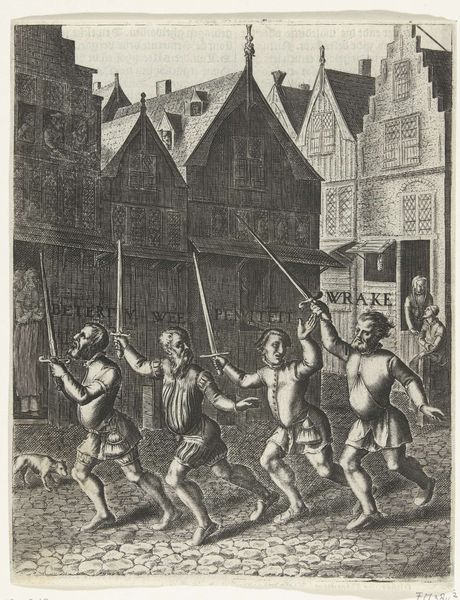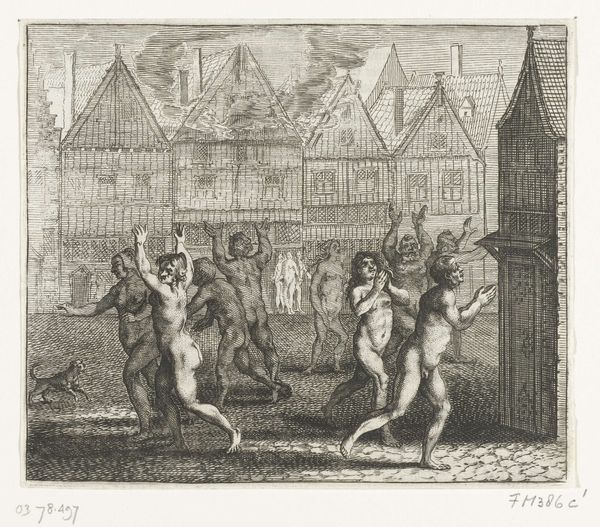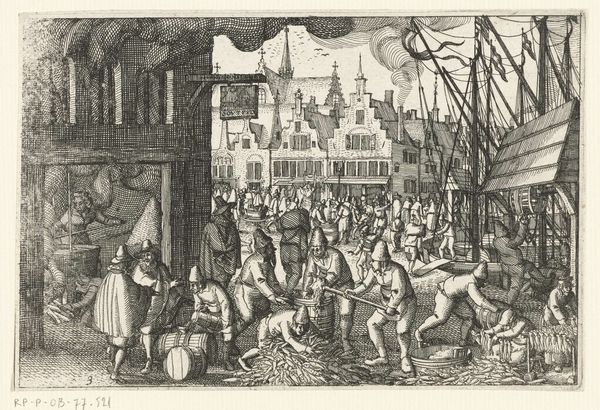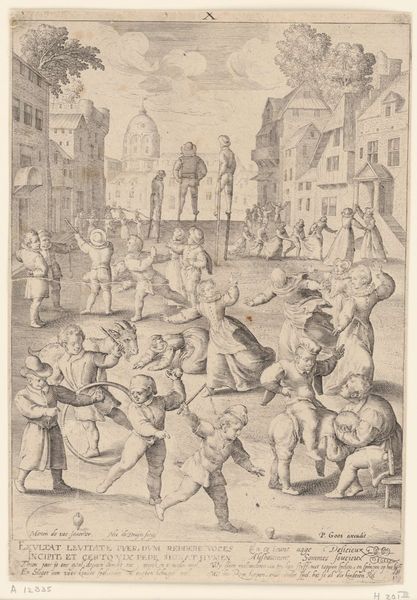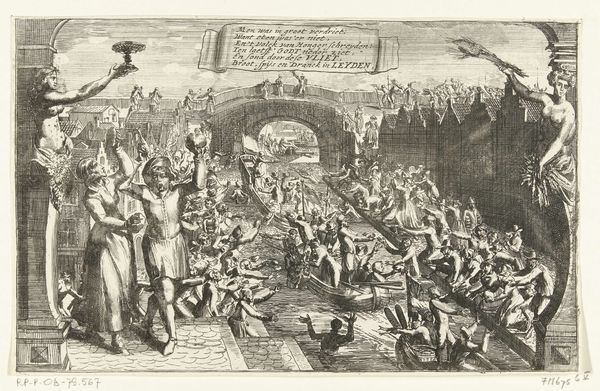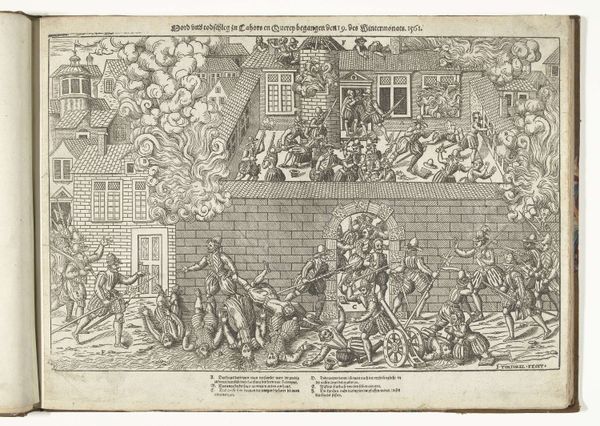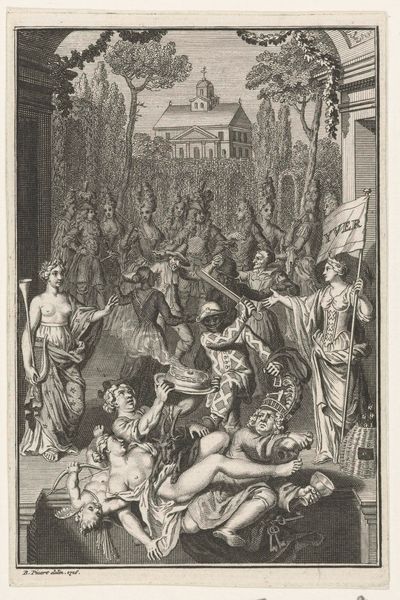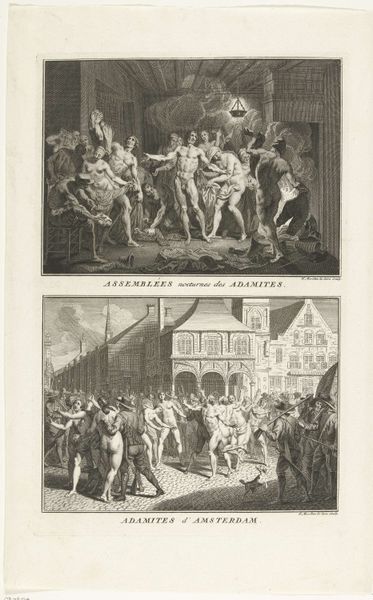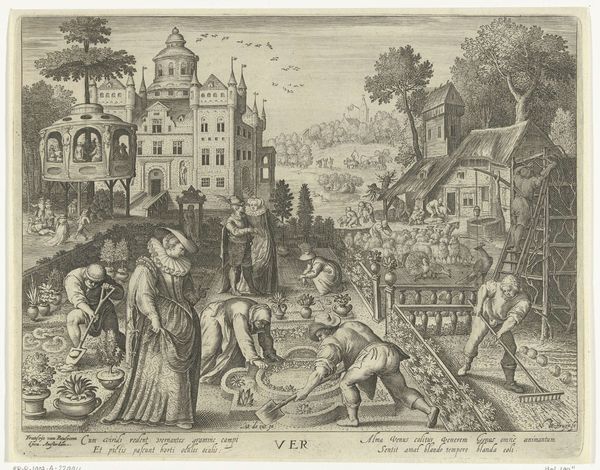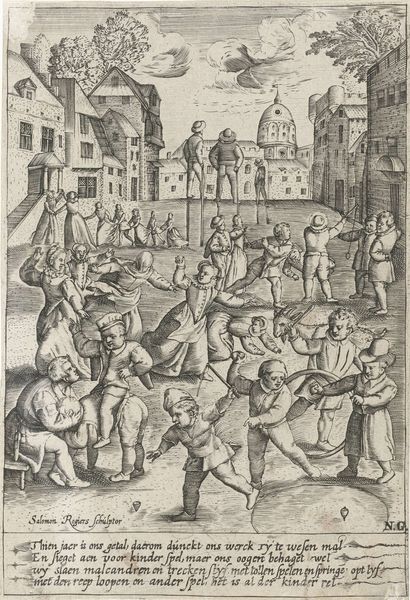
engraving
#
mannerism
#
figuration
#
history-painting
#
nude
#
engraving
Dimensions: height 213 mm, width 173 mm
Copyright: Rijks Museum: Open Domain
Editor: Here we have "Naaktlopers te Amsterdam, 1535", made between 1612 and 1614 by an anonymous artist. It’s an engraving depicting a large group of nude figures fleeing a burning building. What I find striking is the contrast between the chaos of the fire and the somewhat stylized poses of the figures. What do you make of this piece? Curator: Well, given my interest, I’m immediately drawn to the process of creating this image through engraving. The artist meticulously carved these lines to depict not just the scene, but also its historical and social context. Consider the labor involved in producing this print, likely for mass consumption. Who was the target audience, and what story were they meant to take away? Editor: I suppose the print medium suggests a broader audience, maybe more common people rather than elite collectors? The nudity feels… exposing in more than one way. Curator: Exactly. Nudity here is not just aesthetic, but potentially tied to ideas of vulnerability and societal upheaval. The fact it’s an event documented for posterity also suggests an interest in conveying a message about societal order, anxieties, or perhaps even moral failings connected with the fire and its victims. What about the specific details of the printmaking process interest you? Editor: The repetitiveness of the lines… they evoke a sense of uniformity in the crowd. But also, the stark contrast of the black lines on the white paper amplifies the drama. So, by looking closely at this engraving and the context of the Anabaptist riots, do you mean to suggest how art could expose inequalities between classes in Amsterdam at the time? Curator: Precisely! The means of production—engraving—allows the rapid and inexpensive spread of the imagery. It bypasses the normal gatekeepers of wealth for art consumption, reaching everyday viewers. This is both novel and culturally relevant to this time period. What are your concluding thoughts? Editor: I guess I hadn’t considered the material realities shaping this image, but it's definitely another important context when we read art history. It makes me rethink the role of prints like this as agents of social commentary.
Comments
No comments
Be the first to comment and join the conversation on the ultimate creative platform.


